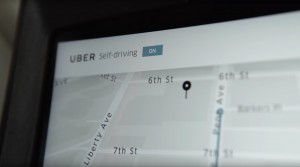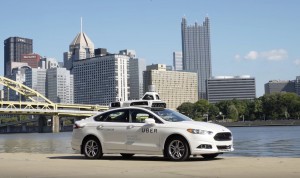
Uber continues to grow around the world, as "mobility" continues to evolve said Uber exec Shant Marakby.
With the transformation of mobility gaining momentum, Uber’s potential for growth is immense; one of the company’s top executives told the annual Automotive News World Congress.
Shant Marakby, a former Ford Motor Co. executive who is now Uber’s vice president of global vehicle programs, said Uber’s ride-sharing business has caught on and continues to expand In cities such as New York, Los Angeles, London and Paris.
Further, the company expects to expand even more by adding autonomous vehicles in the future and help curb the use of surge pricing, which is unpopular with customers.
“Mobility is being transformed around the globe. We really believe the transformation is happening. And it’s just the beginning,” Marakby said.
Marakby said factors such as congestion, pollution and the recognition that vehicles are an under-utilized asset are driving the move towards ride sharing. The world’s roads, streets, garages and parking lots now hold more than 2 billion cars, he noted.
(Connected car industry expected to exceed $130 billion by 2019. Click Here for the story.)
“That’s more than the population of China and Europe combined, but they sit idle 96% of the time,” Marakby said, offering ride hailing services such as Uber a unique opportunity to capture an increasing share of the total miles driven by cars and trucks.
In some larger cities, up to 25% of the younger millennials don’t own a vehicle, he noted.
“Cars are a very under-utilized asset. That’s something that’s changing,” said Marakby, who noted that in Manhattan, which has a very good public transportation there are a lot of areas that there are underserved and unreachable by bus or subway.
“There are 2.7 million cars that drive into Manhattan that’s a lot of congestion and lot of parking,” he said.
“When you look at Manhattan about one third are actually going outside the city. Only 10% of the taxi rides went outside the city, so you are growing mobility. In London, over the 30% of the rides end within 200 yards of a tube station,” Marakby said.
“You’ve got to adapt to the city,” said Marakby, noting the use of Uber’s services has also increased rapidly in Los Angeles, Paris and London. “Peak use is not in the midday or early but at midnight. One of the things it allows people to take a safe option. Fatalities from drunk driving dropped by 5% in California.”
In addition, Uber’s car-pooling service, which encourages users to share rides, is helping reduce congestion in the crowded San Francisco Bay region.
(Click Here to see why Uber moved its self-driving cars to Arizona.)
Ride-sharing could help reduce the number of vehicles on the road. But the number of miles each vehicle is driven would increase, leading to steady or rising demand for new cars and trucks, he said.
Marakby also said Uber is interested in technology and working more closely with automakers as it prepares for a future that will include self-driving cars, which is the main focus of Uber’s pilot program in Pittsburgh where the focus is on the integration of autonomous vehicles into society.
“Pittsburgh actually makes a lot of sense because it’s one of the toughest cities in which to drive. If it works it Pittsburgh it works anywhere,” he added.
“We don’t see autonomous taking over completely. But the biggest difficulty in ride sharing is supply. Surge pricing isn’t good but autonomous (vehicles) will smooth that out” he said.
However, Uber will continue to need ample human drivers as well and never expects to have a completely autonomous vehicle fleet, he said. Marakby also emphasized Uber is not planning to make its own cars.
“Uber is planning to work with OEMs. The auto industry is a very special industry and a very difficult industry. We want to work with tier one supplier getting the technology into these cars,” said Marakby, who said Uber also is preparing to open a development center the Detroit-suburb of Wixom.
“Detroit continues to be the home of the auto industry’s technical capability,” he said, noting a lot of the talent required to put autonomous vehicles on the road is located in Detroit as are the major auto companies and “Tier One” suppliers.
(Uber pulls autonomous cars out of San Francisco. For more, Click Here.)
A lot of the sophisticated technology required for autonomous vehicles also comes from Detroit so it only makes sense to put an Uber technical center within the city’s automotive community.

